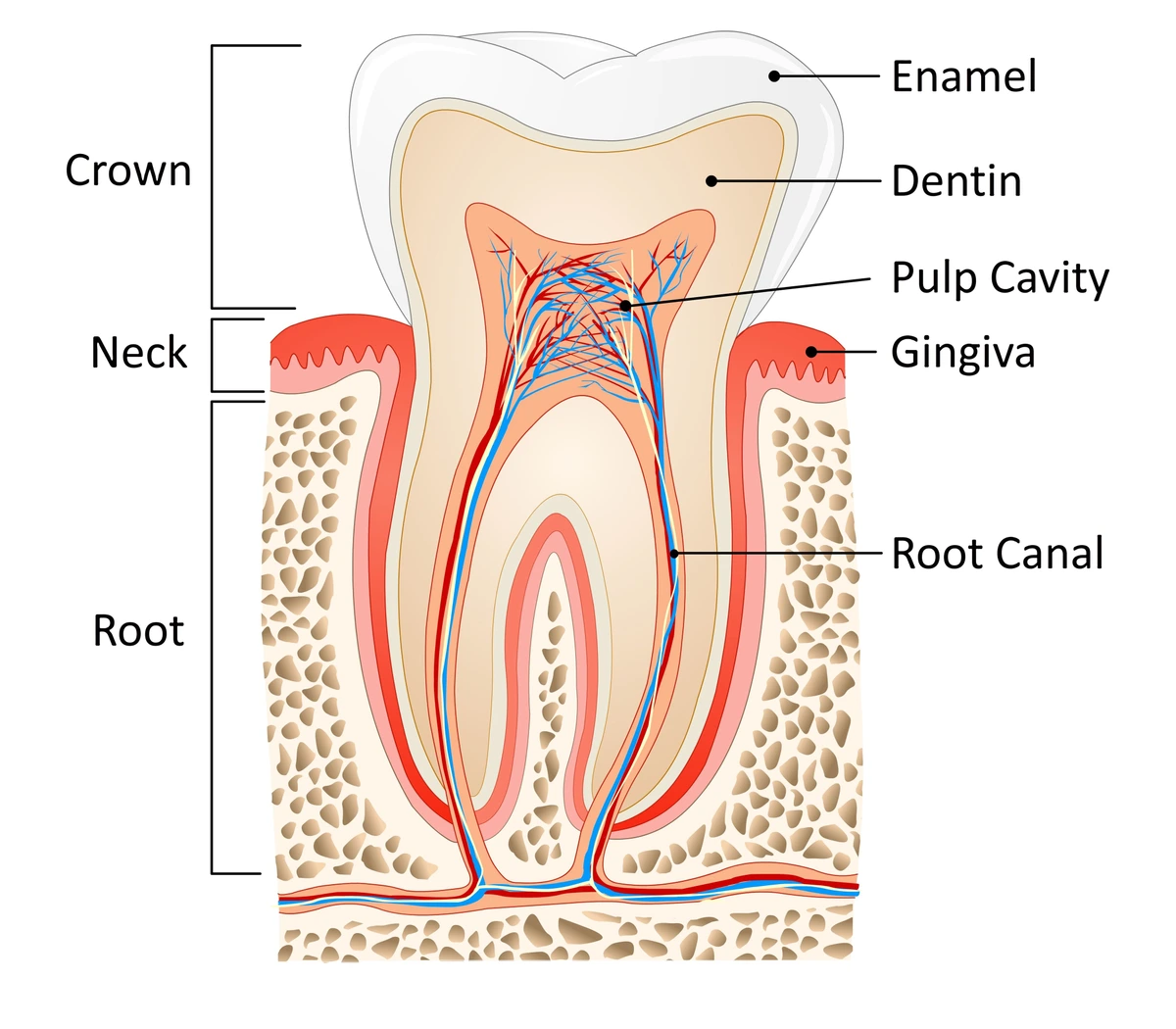Can Your Tooth Enamel Grow Back?


Cavities destroy your tooth enamel. It starts with enamel erosion because of acids and bacteria etching away at your teeth. Although you can’t technically regrow tooth enamel once there’s a physical hole in your tooth, you CAN repair tooth enamel that’s beginning to erode. It all boils down to remineralizing teeth early enough in the decay process.
What Is Tooth Enamel?

Remineralizing Vs. Regrowing
Researchers have worked for years to try to figure out ways to regrow tooth enamel. Much like your heart — whose cells can’t repair themselves — tooth damage is permanent. As of yet, it’s physically and scientifically impossible to regrow teeth or tooth enamel in dental patients. It has to do with the type of cells that make up your tooth structure. Fortunately, there are still ways to repair tooth enamel that’s weak, before it’s physically destroyed.
Mineralization (Remineralizing Teeth)
The best way to repair tooth enamel is through remineralizing teeth. As enamel erosion or demineralization occurs, the outer layer of the tooth becomes weak, dehydrated, and begins to erode. Placing specific minerals — such as fluoride — back into those compromised areas of tooth enamel will remineralize teeth well enough that it can physically stop the cavity process before a filling is required.
Plastification
Enamel plastification is an extremely last-ditch effort procedure that is rarely used by dentists and reserved for more extreme cases or tooth damage. It involves placing a protective sealant of hydroxyapatite crystal varnish material over the outermost layer of tooth enamel in an attempt to delay a more progressive treatment.
How Do You Prevent Enamel Loss?
Enamel erosion is the result of physical weakening that occurs when your tooth is exposed to bacterial plaque, acids, and certain foods on a frequent basis. Thankfully, you can avoid enamel loss through good oral hygiene and a balanced diet.
1) Physically Removing Bacterial Plaque
By brushing twice a day and flossing once a day — eliminates the source of most cavities. The key is to be thorough and frequent in your oral hygiene routine.
2) Your Diet
Second, eat plenty of fresh produce, whole grains, lean proteins, and avoid processed foods and sweetened/flavored beverages. When you indulge now and then, remember “everything in moderation.” Frequent snacking or the wrong diet can easily increase your rate of decay.
3) Fluoride
Finally, you need to be getting enough fluoride either in your diet or through supplemental purposes. Just like calcium, your teeth and bones need fluoride to stay strong and healthy. When it’s applied by your dentist, included in your home care products, and ingested in food and water, fluoride reduces your risk of enamel erosion.
Can You Get Too Much Fluoride?
Sometimes too much of a good thing can actually be bad. An excess of any vitamin or mineral could lead to sickness or even physical irregularities in your body. For instance, if a child swallowed a whole tube of toothpaste or another self-care product, they would likely be extremely nauseous and you would need to call poison control. Ingesting too much fluoride while teeth are still developing can cause permanent tooth enamel irregularities, such as hyperfluorosis, where teeth appear discolored, brown, speckled, or have pitted enamel. The teeth may still be strong, but they won’t look attractive.
Causes Of Enamel Erosion
When plaque sits on your teeth for an extended period (maybe you’re not flossing every day) the byproducts it secretes will continually “eat” away at your teeth. That’s why daily brushing and flossing are so important!
Most enamel erosion is caused by your diet. Frequent snacking throughout the day puts your teeth at an elevated risk of enamel damage. Each time you eat, there is approximately a 30-minute timespan where bacteria and acids are “active” inside your mouth. Eating less frequently and cleaning your mouth between meals/snacks will benefit your overall oral health.
And then there are the liquids you’re sipping on throughout the day. Anything other than water will either have a natural or artificial sweetener in it. That could be juice, milk, etc. Even “diet” or “sugar-free” drinks typically have some type of sugar alternative that is physically capable of causing enamel erosion. When you drink them consistently throughout the day, those liquids coat your teeth and potentially raise your risk of tooth decay. That’s why remineralizing teeth sometimes consists of using fluoride rinses instead of gels.
Underlying health factors — such as acid reflux or GI diseases — can also contribute to tooth damage. If reflux disease isn’t managed, the gradual enamel erosion can weaken and destroy your tooth enamel.
8 Ways To Naturally Remineralize Teeth
1) Brushing With Fluoride
Be sure to use toothpaste with fluoride in it. Even though the dose is extremely low, regular daily use will provide the right minerals to repair tooth enamel on a daily basis.
2) Floss
You need to be able to physically remove the plaque and bacteria between your teeth each day. These spaces are the most prone to enamel erosion and decay.
3) Avoiding Sugary, Starchy, And Acidic Foods
Certain foods put you at a greater risk of cavities and acid erosion. Try to eat more whole grains, fresh produce, and avoid processed foods.
4) Drink More Water
Most municipal tap water has regulated fluoride levels. Drinking tap water helps rinse your teeth and strengthen your smile (and bones!)
5) Chew Gum
Selecting a gum that contains “xylitol” as the primary sweetener can physically reduce plaque levels inside your mouth. Xylitol prevents plaque from sticking to teeth, thereby giving your smile a head start against enamel erosion. Other types of sugars and sweeteners can still cause cavities.
6) Get More Calcium And Vitamins
Nutritional supplements, vitamins, and increased calcium in your diet aren’t just good for your immune system and bones. They’re also beneficial to your teeth and gums! Just aim to get them through your diet when possible, and supplement when you can’t.
7) Cut Out Sugar
Sugar isn’t just in candy. It’s in baked goods, sweet tea, coffee creamer, fruit juice, sports drinks, and soda. Even artificial sweeteners can cause the same level of enamel damage as sugar.
8) Watch Your Dairy Products
Certain types of daily products are better or worse for your teeth than others. For instance, flavored yogurts and chocolate milk are going to have higher levels of sugar and sweeteners. But sharp cheddar cheese can actually neutralize pH levels in your mouth.
Related: Is Coconut Oil Pulling Beneficial or Dangerous?
Talk To Your Dentist
If you’re at high risk for decay or enamel erosion, you won’t be able to ask your dentist to help you regrow tooth enamel, but you can take action toward remineralizing teeth. By having your dentist physically apply a concentrated fluoride varnish or prescribing a professional gel to use at home, you can place minerals back into the outermost layers of your tooth enamel. Even some over-the-counter fluoride rinses can help with remineralizing teeth. The earlier you repair tooth enamel or erosion, the better chances you have at reversing the early stages of cavities. Find a local dentist near you here.
So Can You Regrow Tooth Enamel
You can’t regrow tooth enamel or repair tooth enamel that already had a physical cavity inside of it. But remineralizing teeth with fluoride, having good oral hygiene, and eating a balanced diet can protect your tooth enamel against cavities before there’s an actual hole in your tooth. Talk with your dentist and hygienist about your cavity risk, if your tooth enamel is weak, and what you can do to keep your smile healthier for the years to come.

Make your inbox smile!
Subscribe






